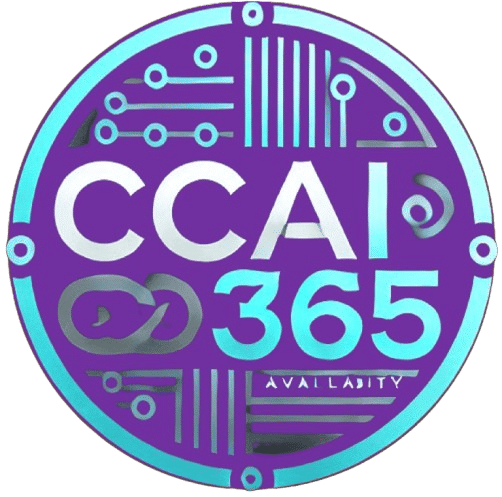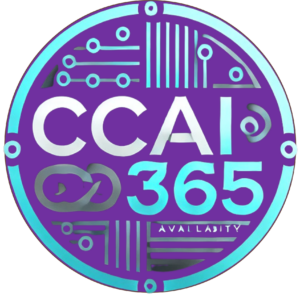Introduction to GPT vs Auto GPT
Artificial intelligence (AI) is no longer a futuristic concept—it’s here, and it’s transforming how small businesses operate, innovate, and grow. At the forefront of this revolution are AI tools like GPT and AutoGPT, each offering unique advantages that can significantly reshape business workflows. But which one is truly the best fit for your small business? In this deep dive, we’ll explore the debate of GPT vs AutoGPT, focusing on their core differences, real-world applications, ROI potential, customer experience impact, and future trends. Whether you’re just getting started or ready to scale, understanding these tools can be the key to unlocking your business’s full potential.
GPT vs AutoGPT: Exploring the Core Functional Differences
When it comes to comparing GPT vs AutoGPT, it’s essential to first understand their foundational structures and functionalities.
GPT, or Generative Pre-trained Transformer, is a powerful language model developed by OpenAI. It excels at generating human-like text based on input prompts. Whether it’s drafting emails, creating marketing content, answering questions, or summarizing documents, GPT is a versatile assistant that enhances productivity by automating cognitive tasks.
AutoGPT, on the other hand, builds upon GPT’s capabilities but takes automation a step further. It’s designed to autonomously complete multi-step tasks with minimal human intervention. While GPT operates in a reactive mode—waiting for your prompt—AutoGPT proactively chains tasks together. For example, if you ask AutoGPT to create a content marketing campaign, it can research your competitors, generate posts, schedule them on platforms, and even analyze engagement metrics.
The key distinction in GPT vs AutoGPT lies in autonomy. GPT is a brilliant tool for direct interaction and guidance, whereas AutoGPT is an autonomous agent designed to execute end-to-end workflows. For small businesses juggling multiple roles and limited resources, this level of automation can be a game-changer.
Leveraging AutoGPT for Smarter, Automated Small Business Processes
AutoGPT’s ability to automate entire workflows makes it an ideal tool for streamlining repetitive tasks in small business operations.
Consider tasks like lead generation, customer follow-ups, inventory updates, or invoicing—these are time-consuming yet critical to business health. AutoGPT can be configured to handle these tasks with consistency and accuracy. For instance, an eCommerce small business can use AutoGPT to automatically update stock levels, send customer reminders, and adjust marketing copy based on seasonal trends—all without manual oversight.
Moreover, AutoGPT can integrate with tools like CRMs, ERPs, and social media management platforms, turning scattered digital tasks into cohesive operations. This allows small businesses to free up time and focus on growth strategies rather than administrative drudgery.
By comparing GPT vs AutoGPT in terms of operational efficiency, AutoGPT emerges as a more robust choice for automation. It reduces human dependency, minimizes errors, and ensures tasks are completed around the clock—making it a true digital workforce.
GPT vs AutoGPT: Which AI Delivers Better ROI for Small Businesses?
Return on investment (ROI) is a critical metric for any small business considering new technology. In the debate of GPT vs AutoGPT, determining which AI tool provides better ROI depends on your business needs and goals.
GPT delivers immediate value for businesses needing intelligent assistance with copywriting, customer service responses, and knowledge management. It requires low setup and can be deployed instantly. Its ROI comes from saved time and increased output quality.
AutoGPT, while more complex to implement, offers exponential ROI over time. By automating full processes—sales funnel creation, customer onboarding, or email campaigns—it reduces staffing costs and operational bottlenecks. While the initial learning curve and configuration might be higher, the long-term value it brings through scalable automation far outweighs the cost.
Many small businesses report that once AutoGPT is tailored to their needs, it functions like a digital team member, delivering continuous results with little oversight. That’s a competitive advantage no traditional tool can match.
So in the GPT vs AutoGPT showdown, if your business needs fast content creation, GPT is a cost-effective ally. But if you’re seeking end-to-end automation and long-term scalability, AutoGPT leads the ROI race.
The Role of AutoGPT in Enhancing Customer Experience and Engagement
Today’s consumers expect fast, personalized, and consistent interactions with brands—regardless of business size. AutoGPT is uniquely positioned to elevate customer experience and drive engagement.
From the moment a lead lands on your website, AutoGPT can interact via chatbot, recommend products, answer FAQs, and even trigger automated follow-up emails. It doesn’t stop there. Post-purchase, AutoGPT can solicit reviews, deliver loyalty offers, and maintain ongoing communication, ensuring your brand remains top-of-mind.
Unlike GPT, which requires prompts and human input to respond, AutoGPT can monitor and react to customer actions autonomously. This gives small businesses the power to deliver enterprise-level service without hiring large support teams.
Moreover, AutoGPT can analyze customer data to personalize communication, predict behavior, and adapt marketing efforts in real time. This level of proactive engagement can significantly improve customer satisfaction and retention—key drivers of small business growth.
In the GPT vs AutoGPT landscape, when customer experience is a priority, AutoGPT emerges as the powerhouse tool small businesses can rely on to build meaningful, scalable relationships.
Future Trends in GPT vs AutoGPT for Small Business Technology Adoption
As AI technology continues to evolve, the capabilities of both GPT and AutoGPT are expected to expand rapidly. Small businesses need to stay ahead of these trends to maintain a competitive edge.
One major trend is the integration of AutoGPT into no-code and low-code platforms, making it easier for non-technical users to automate complex processes. This democratization of AI automation will empower more small business owners to adopt sophisticated tools without hiring developers.
Another emerging trend is the fusion of GPT vs AutoGPT with voice assistants, IoT devices, and real-time analytics. Imagine an AutoGPT system that not only tracks sales in real time but also alerts you via smart speaker and automatically reorders inventory when stock runs low.
Security and compliance will also take center stage, with AutoGPT evolving to meet industry-specific regulations—especially in finance, healthcare, and legal sectors.
Ultimately, the future of GPT vs AutoGPT in small business will be defined by adaptability. Businesses that embrace AI early and align it with their strategic goals will be the ones to thrive in an increasingly automated world.
Conclusion
In the dynamic world of AI, understanding the comparison of GPT vs AutoGPT is crucial for small businesses ready to innovate and grow. GPT offers an accessible entry point for AI-enhanced productivity, while AutoGPT provides the autonomous power needed to streamline operations, boost ROI, and elevate customer experiences.
As we look to the future, the choice isn’t just about which tool is better—it’s about which tool is better suited for your specific business goals. Small businesses that strategically adopt AI agents like GPT and AutoGPT will not only keep up with industry changes but set new standards for innovation.
Call CCAi365 at 252-668-1640 to start your AI journey! Whether you’re exploring GPT or ready to unleash the power of AutoGPT, we’re here to help you transform your business with cutting-edge automation solutions.


